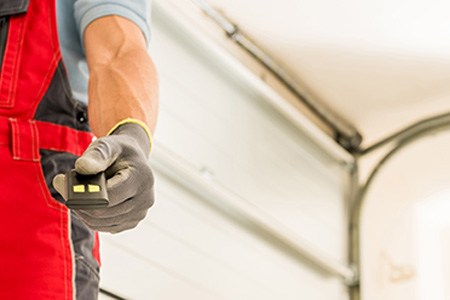Garage Door Repair Parker CO Fortunately, there are several effective methods you can use to keep rainwater out.

Here’s a detailed guide on how to keep rain from coming under your garage door:
1. Install a Garage Door Threshold Seal: One of the most effective ways to keep rainwater out of your garage is by installing a garage door threshold seal. These seals create a barrier along the bottom of the garage door, preventing water from seeping in underneath. Threshold seals are typically made of durable rubber or vinyl and can be easily installed with adhesive or fasteners.
2. Check and Replace Weatherstripping: Inspect the weatherstripping along the sides and bottom of your garage door for signs of wear, damage, or deterioration. Over time, weatherstripping can become cracked, torn, or loose, allowing water to leak into the garage. Replace any damaged weatherstripping with new material to ensure a tight seal around the door.
3. Adjust the Garage Door Bottom Seal: If your garage door has a bottom seal or gasket, check to ensure that it is properly aligned and in good condition. Adjust the seal as needed to ensure a tight fit against the garage floor, and replace it if it is worn or damaged.
4. Install Rain Diverters or Drip Caps: Rain diverters or drip caps can be installed along the top edge of the garage door to redirect water away from the door and prevent it from pooling or dripping underneath. These devices are typically made of metal or plastic and can be easily attached to the door using screws or adhesive.
5. Extend the Downspouts and Gutters: Ensure that your home’s downspouts and gutters are directing water away from the garage door and foundation. Extend the downspouts to discharge water at least several feet away from the garage, and ensure that the gutters are clean and free of debris to prevent overflow.
6. Create a Slope Away from the Garage: If the ground around your garage slopes towards the door, water may accumulate and flow underneath during heavy rain. To prevent this, create a slight slope away from the garage by adding soil or gravel to the ground near the door. This will help to divert water away from the garage and prevent it from pooling near the door.
7. Use Sandbags or Flood Barriers: In areas prone to flooding or heavy rain, consider using sandbags or flood barriers to create a temporary barrier around the garage door. Place sandbags or barriers along the bottom edge of the door to prevent water from seeping in underneath during storms or heavy rainfall.
8. Seal Cracks and Gaps: Inspect the walls and foundation of your garage for any cracks or gaps where water could enter. Seal any cracks or gaps with caulk or epoxy sealant to prevent water infiltration.
9. Install a Garage Door Screen: Consider installing a garage door screen to provide additional protection against rainwater while still allowing airflow and ventilation. Garage door screens are made of durable mesh material and can be easily installed using a track system or Velcro straps.
10. Maintain Your Garage Door: Regularly inspect and maintain your garage door to ensure that it remains in good condition and functions properly. Lubricate moving parts, tighten loose hardware, and replace worn or damaged components as needed to keep the door weather-tight and secure.
Garage Door Repair Parker CO Regular maintenance and inspections will help to ensure that your garage remains dry and secure, even during heavy rainstorms.
Martin Garage Door
10411 S Parker Rd, Parker, CO 80134
1-303-663-1310

Leave a Reply